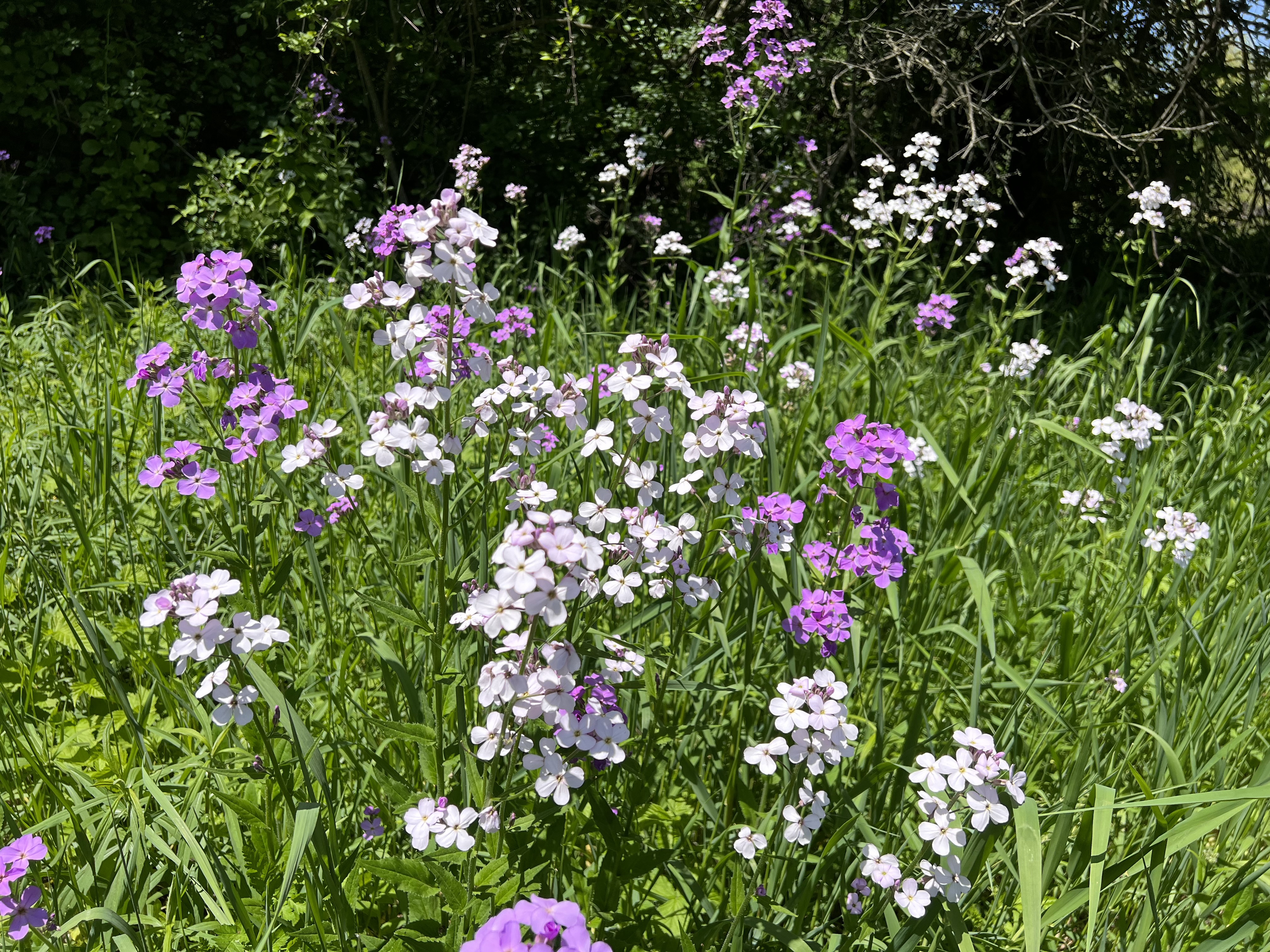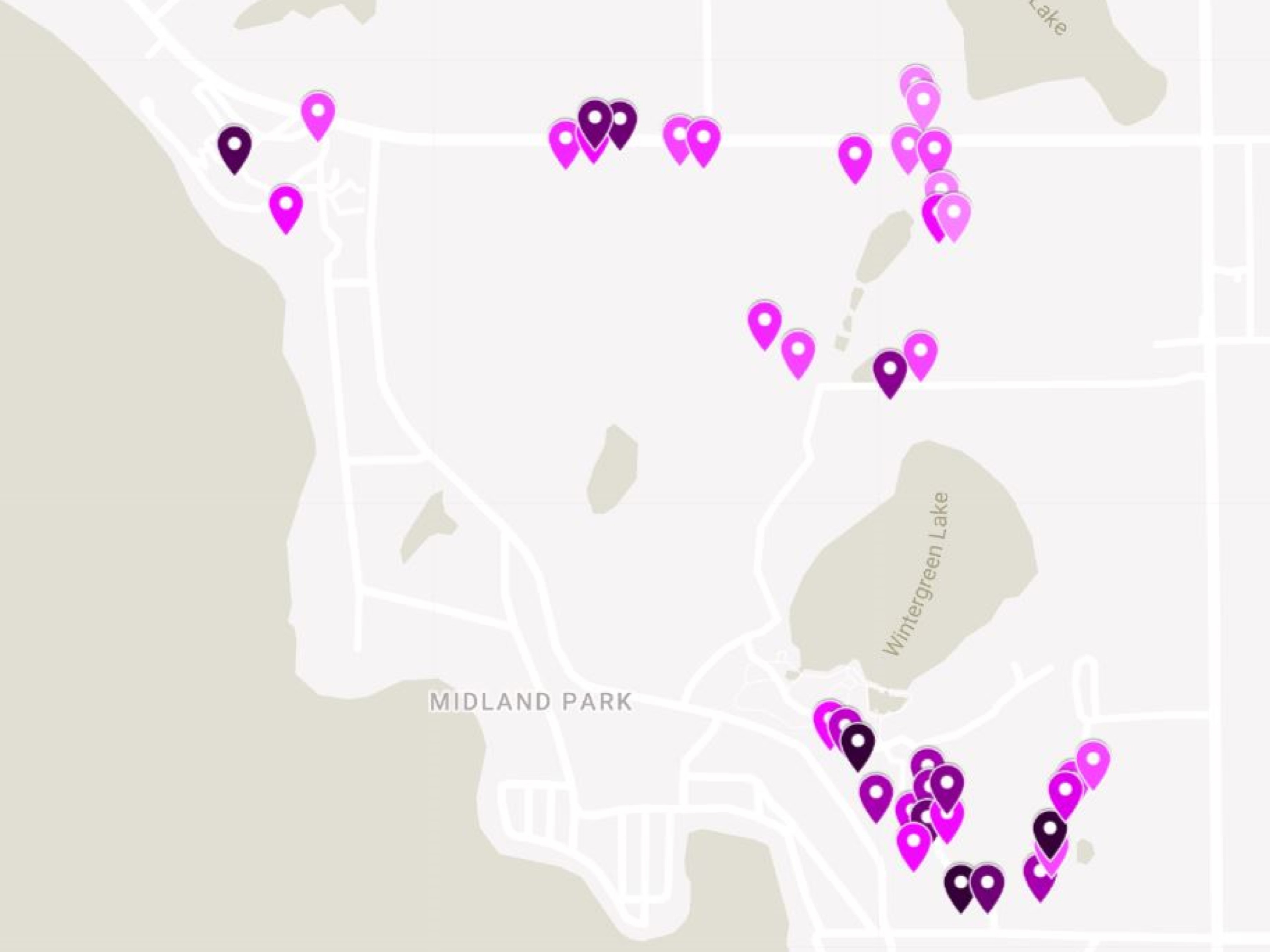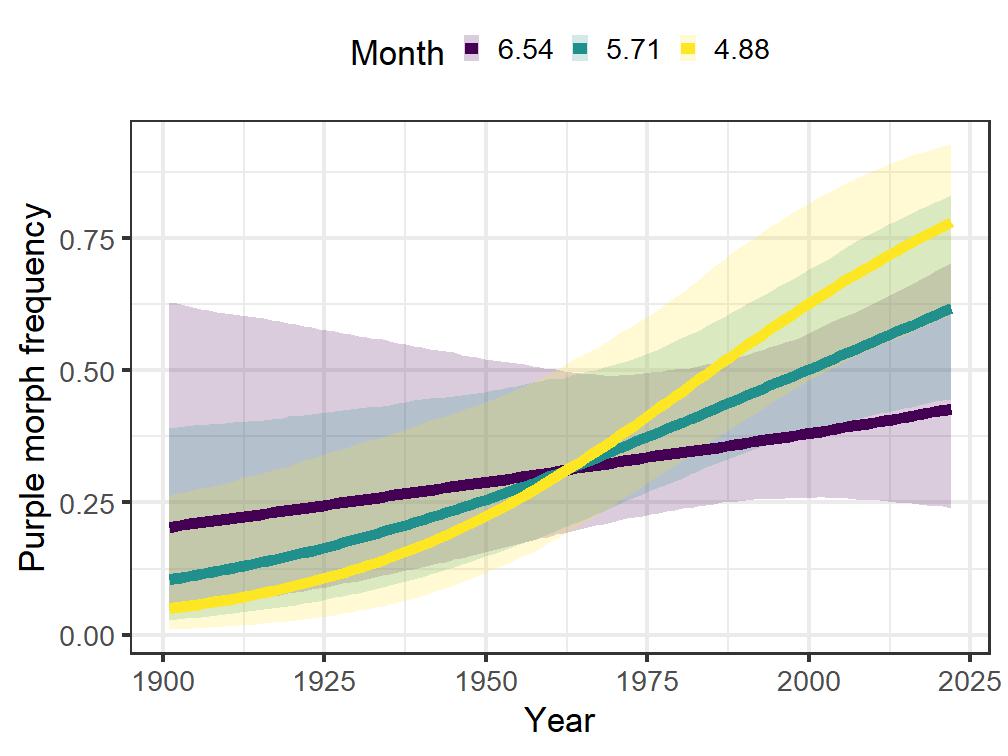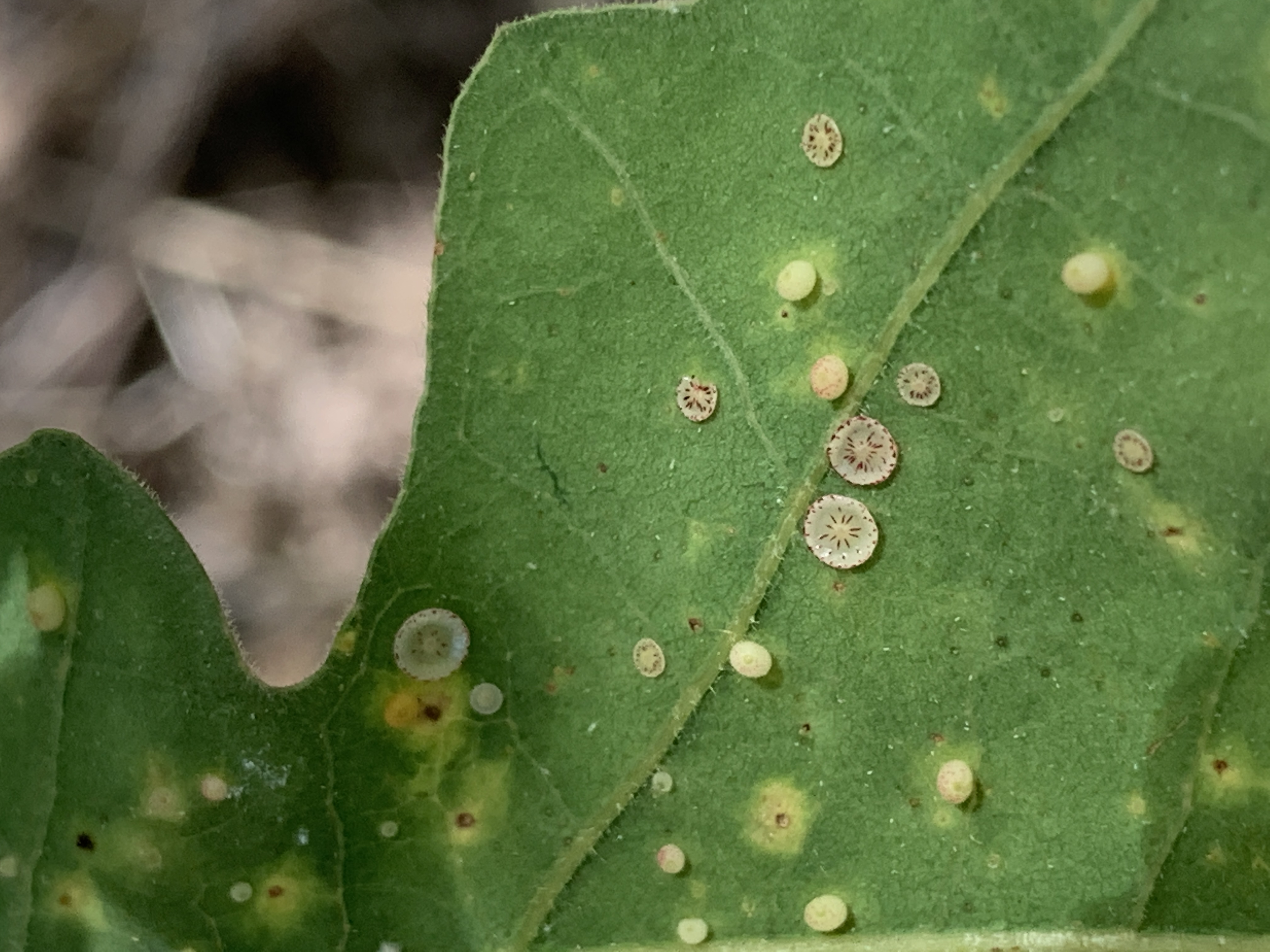
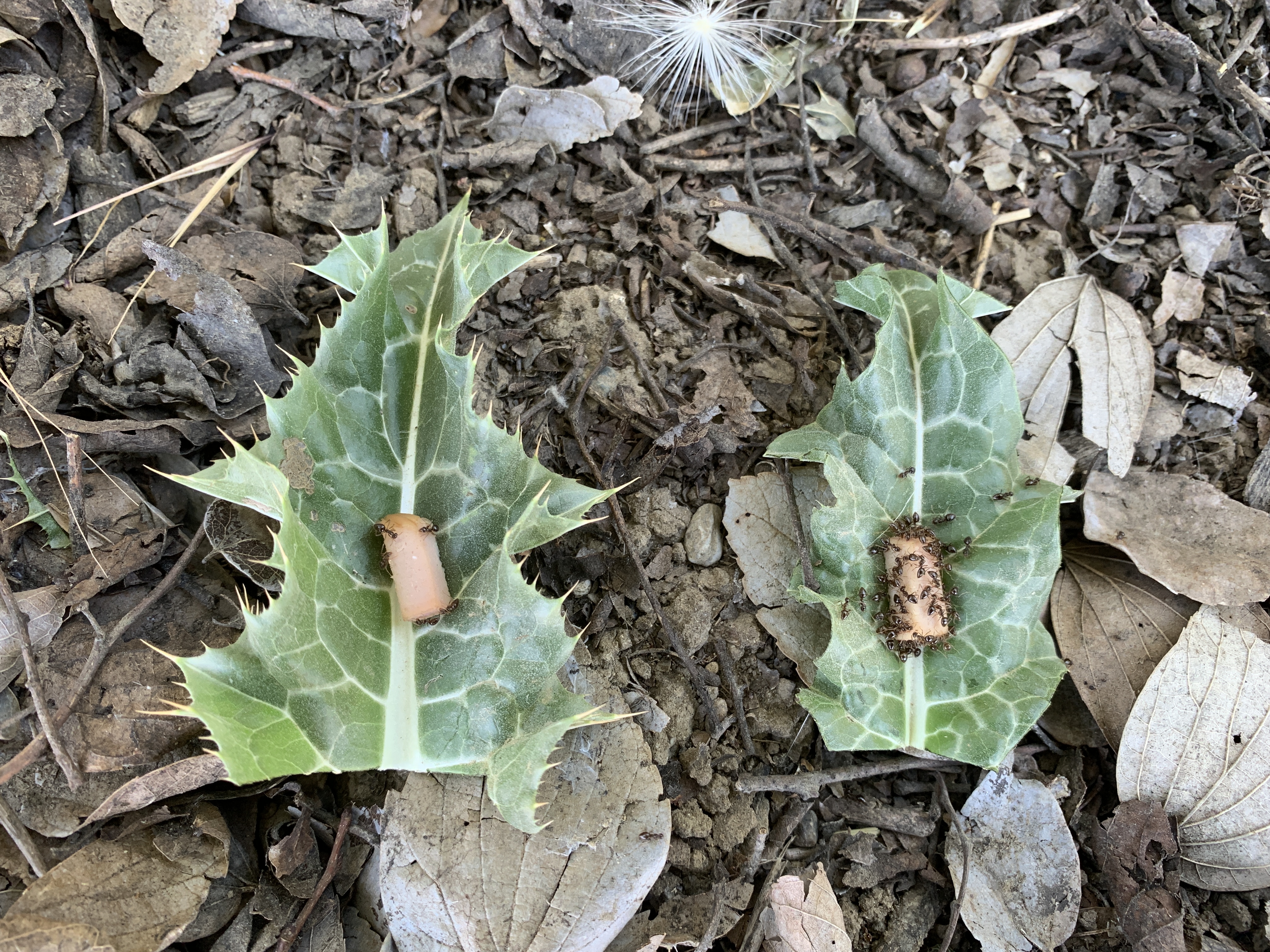
I strongly believe that ecology is an egalitarian art. So much cool ecology is happening right under our nose; so much good ecology can be done by just walking outside with a pencil and a notebook. Ecology is a young field and the world is yet spectacularly complex and diverse. I explore hidden natural history by working with whatever natural study systems I can find on the side of the road.
One of the natural history mysteries I work on is the retention of dead leaves over winter on some plants (e.g. beech, oaks). The leaves are not photosynthesizing– why do plants do it!? Leaf retention seems to have an effect on herbivore density and diversity in the spring (Pan et al. 2021) and more recent work suggests that it may promote baculovirus transmission among herbivores (Pan et al. 2023).
Another natural history mystery I work on is the maintenance of floral color polymorphism in dame’s rocket (Hesperis matronalis). In the wild, both purple and white flower morphs often grow side by side. What might be driving different assemblies of morph ratios through time and space? To tackle this question, I have been experimenting on 40 local populations of H. matronalis in Michigan, and looking into iNaturalist and herbarium records, which span across the globe to as far back as 1830. There is evidence of niche segregation and frequency dependent selection driven by climate anomalies and herbivores.
